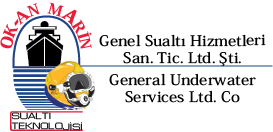Across shipping and other maritime industries, a clean hull provides significant economic and
environmental value. Biofouling on a hull, even a primary slime, will increase skin friction and
drag that leads to increased fuel consumption and GHG emissions, and it also facilitate the
translocation of harmful marine species. The prevention of biofouling is largely achieved by the
application of biocidal antifouling coatings to most of a vessel’s wetted surface, but these
coatings are rarely 100% effective in preventing the attachment and growth of all biofouling. At
best, the underwater hull will quickly become coated with a biofilm of microorganisms; at worst, the paint will fail and become coated with a diverse assemblage of marine plants and invertebrates. Maintaining a clean hull requires either regular dry-docking for cleaning and
restoration of the antifouling system, or in-water husbandry to remove biofouling from
underwater surfaces and to regenerate the antifouling coating. In-water cleaning of hulls has,
and continues to be, a common biofouling management practice in Europe and the Americas
and the demand for cleaning is increasing worldwide as vessels endeavour to reduce their CO2 emissions.
Our services for the vessel ;
Underwater cleaning of all submerged of port and starboard sides from water surface to bilge keels and from bulb to sternpost.
Underwater cleaning of both sides of propeller blades.
Underwater cleaning of propeller boss.
Underwater cleaning of both sides of rudder blade.
Underwater cleaning of both lateral bilge keels.
Underwater cleaning of flat bottom area from bilge keels to central keel and from bulb to sternpost.
Underwater cleaning of sea chest gratings on the outside (passing the cleaning machine over the gratings only, not cleaning between bars).
Non – Destructive Testing Services
Okanmarin.com · Tüm hakları saklıdır. © 2013


